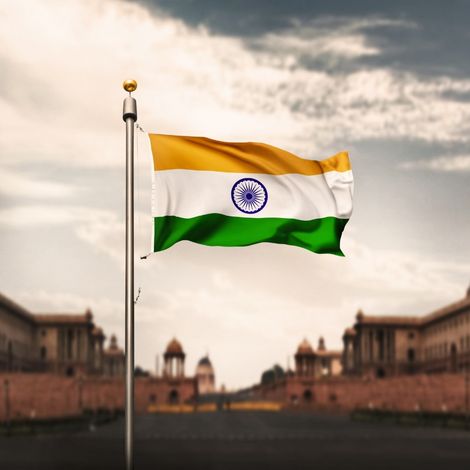
The Emblems and Names (Prevention of Improper Use) Act, 1950 (“the Emblems Act”) prevents the improper use of certain emblems and names for professional and commercial purposes.
Exactly 75 years ago, at the stroke of midnight, India got freedom from the British rule to become an independent nation. Every year, 15th August celebrates the birth of our nation with joyous aplomb – the Indian tricolour flags of diverse sizes flood the market – gracing homes, establishments, vehicles, and streets. This fervour is mirrored by a rise in advertisements and promotions of brands who generously use tricolour and other signages to mark their celebrations. Every product and service tends to capitalise on patriotism on this day to attract consumers.
While this popular practice, particularly the use of the Indian national flag undoubtedly boosts sales, it is wiser to ensure that no laws are broken through such use. Be it a permanent or temporary show of patriotism, brands must know that improper use of certain signs and symbols carries a legal responsibility.
Protection against improper use of national emblems
The Emblems and Names (Prevention of Improper Use) Act, 1950 (“the Emblems Act”) prevents the improper use of certain emblems and names for professional and commercial purposes.
The Emblems Act defines the word ” emblem ” as any emblem, seal, flag, insignia, coat-of-arms, or pictorial representation specified in the Schedule to the Emblems Act. This list includes the Indian National Flag and name or pictorial representation of the Rashtrapati Bhavan, Raj Bhavan, Mahatma Gandhi, Pandit Jawahar Lal Nehru, the Prime Minister of India, and the Ashoka Chakra.
Section 3 of the Emblems Act prohibits any colourable imitation of these emblems being used for trade, business, calling, or profession, without prior permission of the Central Government including the mention or representation of these in the title of a patent, trademark, or design. Thus, any of these emblems cannot be used in a logo for a business or any other commercial purpose without prior permission of the Central Government or its authorized officer.
 Section 4 of the Emblems Act prohibits the registration of a company or a trademark that bears any of these listed emblems or their colourable imitations. If a question arises before a competent authority, such as the Trademarks Registry, whether any emblem is an emblem specified in the Schedule of the Emblems Act or a colourable imitation thereof, such question will be referred to the Central Government for a final decision.
Section 4 of the Emblems Act prohibits the registration of a company or a trademark that bears any of these listed emblems or their colourable imitations. If a question arises before a competent authority, such as the Trademarks Registry, whether any emblem is an emblem specified in the Schedule of the Emblems Act or a colourable imitation thereof, such question will be referred to the Central Government for a final decision.
While there is a penalty prescribed under Section 5 as a fine up to Rs. 500/-, section 6 clarifies that no prosecution of any offence under the Emblems Act will be instituted, except with the prior sanction of the Central Government. Section 7 provides that apart from what is provided under the Emblems Act, nothing will exempt any suit or other proceedings which might be brought against a person. This means that in addition to the Emblems Act, one can also be liable under other provisions of other applicable laws, e.g., the Prevention of Insults to National Honour Act, 1971. Currently, there are proposals for amendment of the Emblems Act including enhancing the penalty amount and inclusion of imprisonment.

